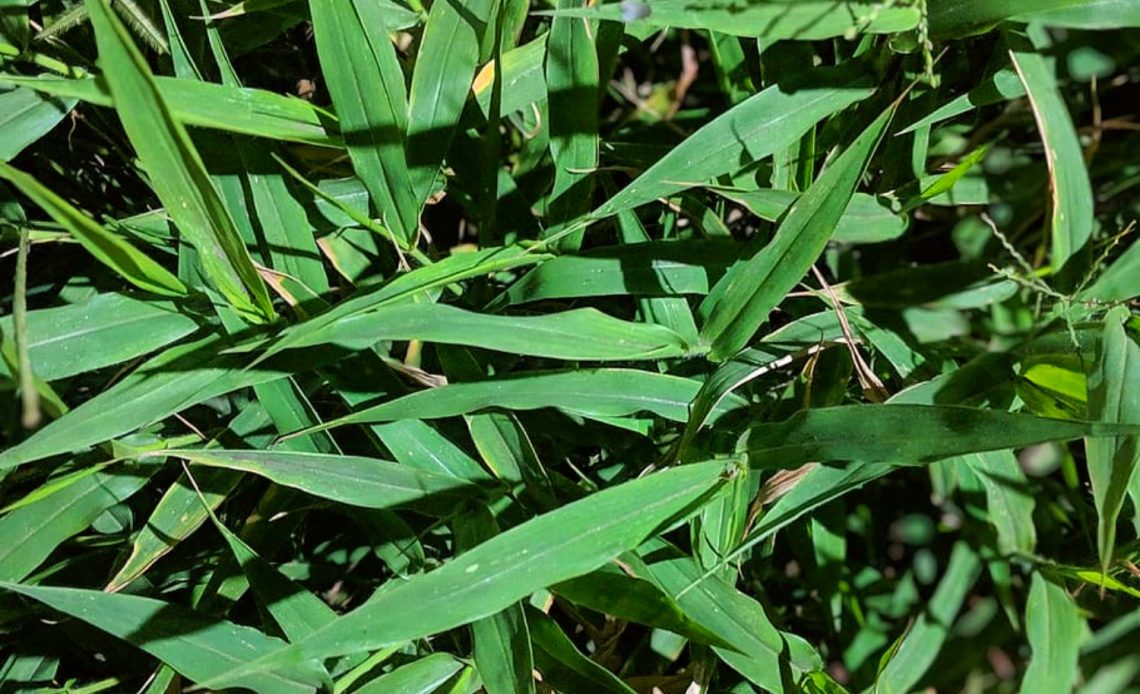

We’re here to help! Wild Yards is a completely free website that is 100% dedicated to helping you create a wildlife-friendly, sustainable yard. Read more
WildYards is reader-supported. When you buy a product through a link on our site, we may earn a comission. Every product is independently selected by our (obsessive) editors and our reviews are unbiased and objective. Read more about our mission or our privacy policy.
A perfect lawn doesn’t grow overnight. It takes years of patient care. You’ve got to be vigilant about weeding and watering, and you have to stick to a regimented fertilizing schedule, too. If you’ve gone the whole nine yards for your lawn, only to wake up one morning and find it covered in clusters of crabgrass, you’re probably wondering where it all went wrong and, more importantly, what you can do to get things back on track. As it turns out, what most of us call “crabgrass” isn’t crabgrass at all. It’s Poa Annua. But what are the differences between Poa Annua vs. crabgrass?
Poa Annua is a type of annual bluegrass that grows best when temperatures are between 60 and 75 degrees Fahrenheit. Meanwhile, crabgrass is a warm weather annual that prefers hot conditions, growing rapidly when the mercury is between 80 and 95 degrees.
Poa Annua vs. crabgrass: different appearances
The first step to determining whether your lawn is infested with Poa Annua or crabgrass is to take a closer look at the plant in question. So grab a magnifying glass and give the plant a second look.
Poa Annua has fine leaves
“Poa Annua” basically means annual bluegrass, but it isn’t blue at all, it’s actually a bright yellow-green. Poa Annua produces thin blade-like leaves that emerge from a central point. The leaves are serrated along the edges and only grow about 12 inches tall. Plants go to seed in the spring and early summer. The seeds of a Poa Annua plant are green to tan in color and oblong in shape. The seeds appear in clusters at the tops of long stalks. Poa Annua generally goes unnoticed until it goes to seed.
Crabgrass has broader leaves
Although crabgrass does not have super broad leaves, they are much broader than Poa Annua leaves, by comparison. Crabgrass has a coarse texture with a spreading, low-growing habit, giving it a wider, flatter appearance than Poa Annua. Plants are typically medium green, as opposed to yellow-green, with yellow blades sometimes showing up at the bottom of the plant. In late summer to early fall, crabgrass produces tiny oval-shaped seeds that are brown and resemble grains of rice. Like Poa Annua, crabgrass seeds emerge in clusters at the ends of long stalks, where the wind can help carry them away once they disperse.
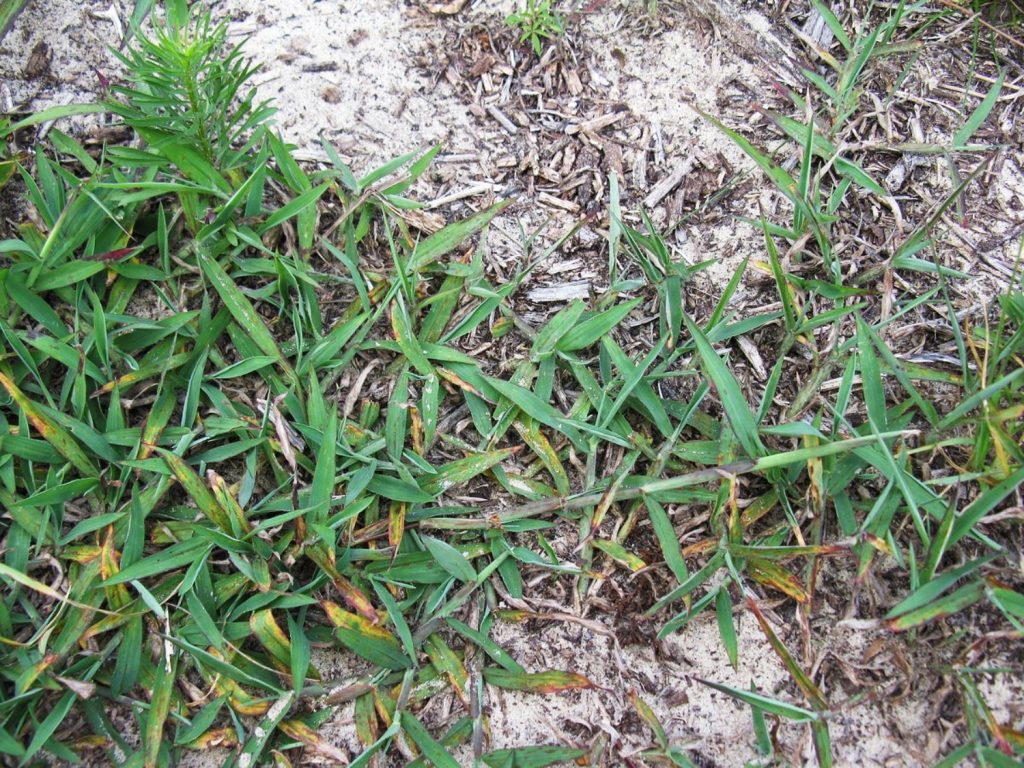
Poa Annua vs. crabgrass: similar lifecycles
Though Poa Annua and crabgrass don’t look much alike, their lifecycles are very similar. As annual grasses, both plants die back at the end of their growing season and rely on their seeds to propagate.
Poa Annua and crabgrass produce an abundance of seeds
Both Poa Anna and crabgrass are annuals. But Poa Annua is a winter grass, dying back in the summer when temperatures become uncomfortably hot. Crabgrass, on the other hand, emerges in spring and grows rapidly during the summer months, only to die back in winter. Although they may not live during the same seasons, their lifecycles are still very much alike.
Since both types of grass are annuals, they rely on their seeds to continue the spread of the species once their own lifecycle has ended. Both of these plants produce scads of seeds, which are tiny and easily spread in the wind. This, coupled with the fact that the seeds have a high germination rate, makes both Poa Annua and crabgrass incredibly difficult to eradicate.
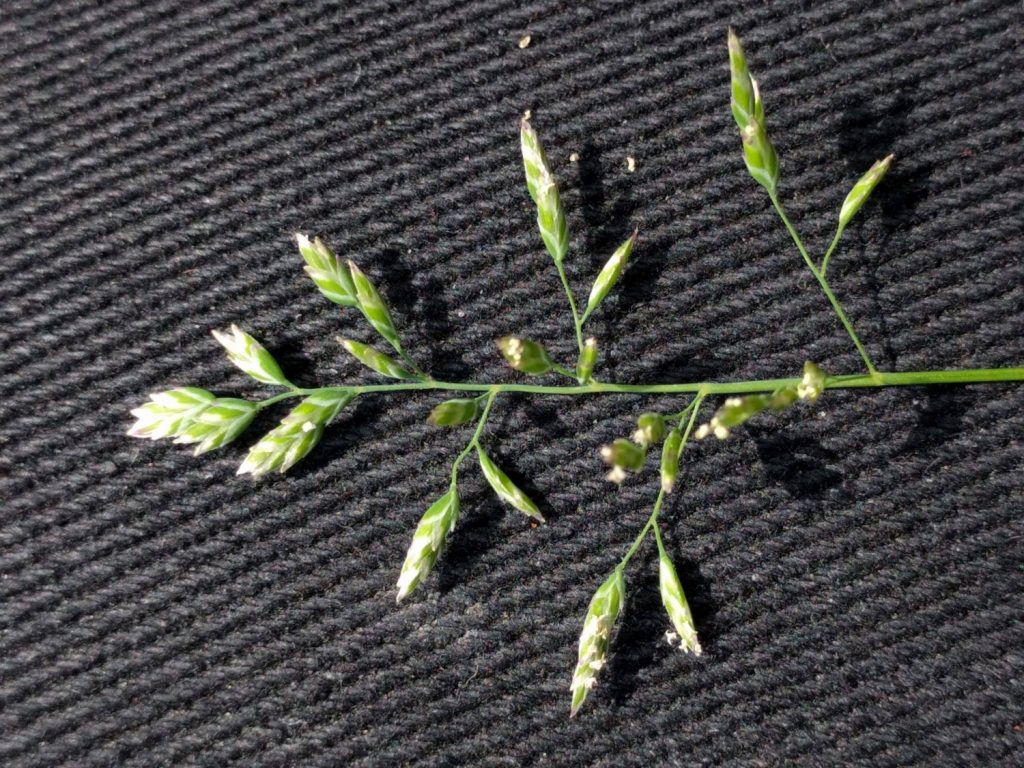
Poa Annua vs. crabgrass: different growing requirements
When it comes to differentiating between Poa Annua vs. crabgrass, another thing that can help you tell the two apart is their growing requirements. Both plants have very different light, moisture, and soil needs.
Poa Annua prefers shady spots that stay cool
Most of the similarities between Poa Annua vs. crabgrass have to do with where and when they grow. If the grass in your lawn turf is growing in a shady location with moist soil, then chances are, you’re dealing with Poa Annua, not true crabgrass. Poa Annua grows best in cool weather, so those shady spots in your yard are an ideal growing ground. These plants pack together tightly, acting as their own mulch to lock moisture in the soil so they can continue to thrive. When temperatures go above 80 degrees or so, Poa Annua dies off, leaving its seeds behind to sprout next spring.
Crabgrass grows in full sun and warm temperatures
Crabgrass is tough. It can survive in poor soils that don’t have many nutrients to offer. It also thrives in full sun, seemingly growing stronger in the heat. Crabgrass can tolerate mild temperatures around 60 degrees, but it prefers it if the mercury stays around 80 to 95 degrees during the growing season. Crabgrass is somewhat drought-tolerant, although it may turn brown and die back when rain is especially scarce. However, you’re more likely to find crabgrass growing in dry soils that drain well than in muddy ones. Sandy bare spots are the perfect place for crabgrass to sprout, and once they’re growing, they release toxic substances to kill off their competition.
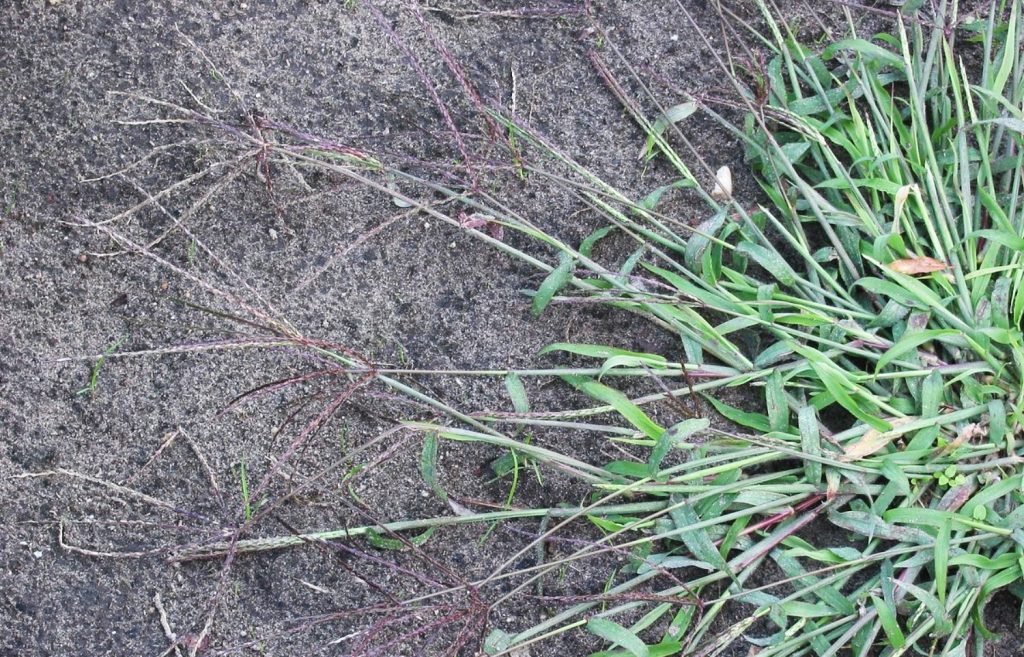
Poa Annua vs. crabgrass: similar hardiness
Poa Annua and crabgrass can be found all across the continental United States, the former growing primarily in zones 2 through 10, and the latter sticking to zones 2 through 11.
Poa Annua and crabgrass are both highly adaptable
Although Poa Annua and crabgrass have their own preferred growing requirements, they are both highly adaptable and capable of surviving clay-rich, compacted soils that aren’t suitable as a growing medium for other plants. This is yet another reason why both of these grasses are considered invasive.
Because Poa Annua and crabgrass are so resourceful, they can be found growing almost anywhere, from livestock pastures to vegetable gardens, and from golf courses to front lawns. In spite of the fact that neither of these plants needs many nutrients to grow; when planted in fertile soils, they will gladly use up available vitamins and minerals, competing with surrounding plants for nutrition.
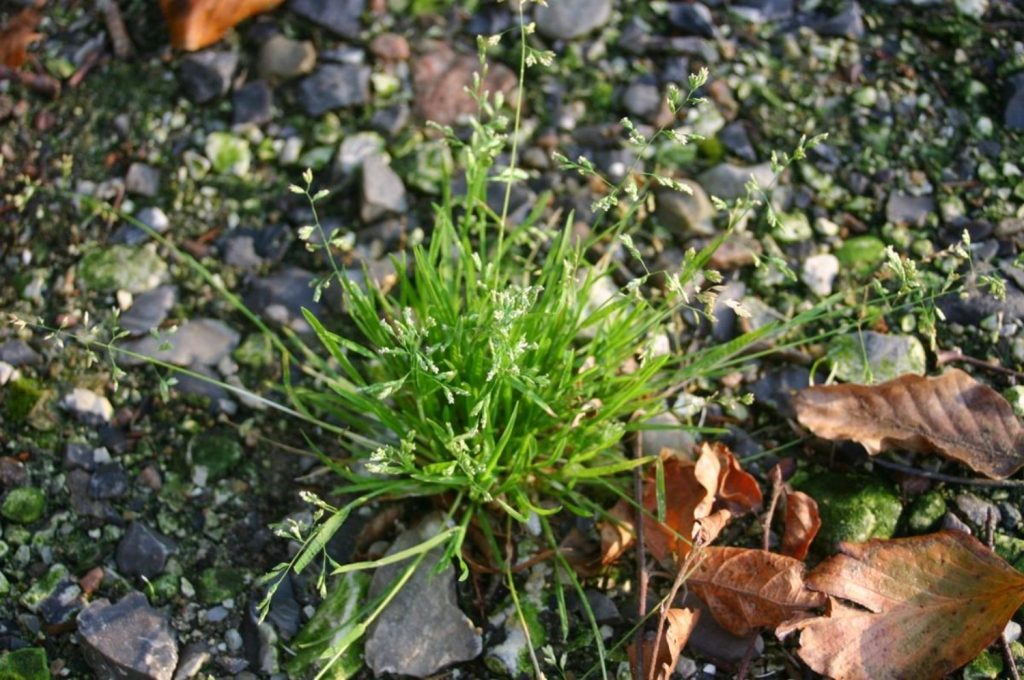
Poa Annua and crabgrass: getting rid of them
When it comes to removing Poa Annua and crabgrass, knowing which one you’re dealing with is only a small piece of the puzzle. Since both of these plants is highly invasive, you’ll need to be persistent about eliminating them. You’ll also have better luck if you employ more than one strategy at once.
Manual removal
If these grasses are spotted early enough in the invasion, then your best bet is to remove them by hand. Isolated Poa Annua plants produce more seeds than plants that are more tightly knit, so uprooting them before they go to seed is paramount. Use a weed fork and hand trowel to remove the grasses, taking as much of their root systems with them. Ideally, you should remove Poa Annua and crabgrass before they’ve gone to seed. Otherwise, jostling them about as you uproot them may cause the seeds to scatter and create more problems for you down the line.
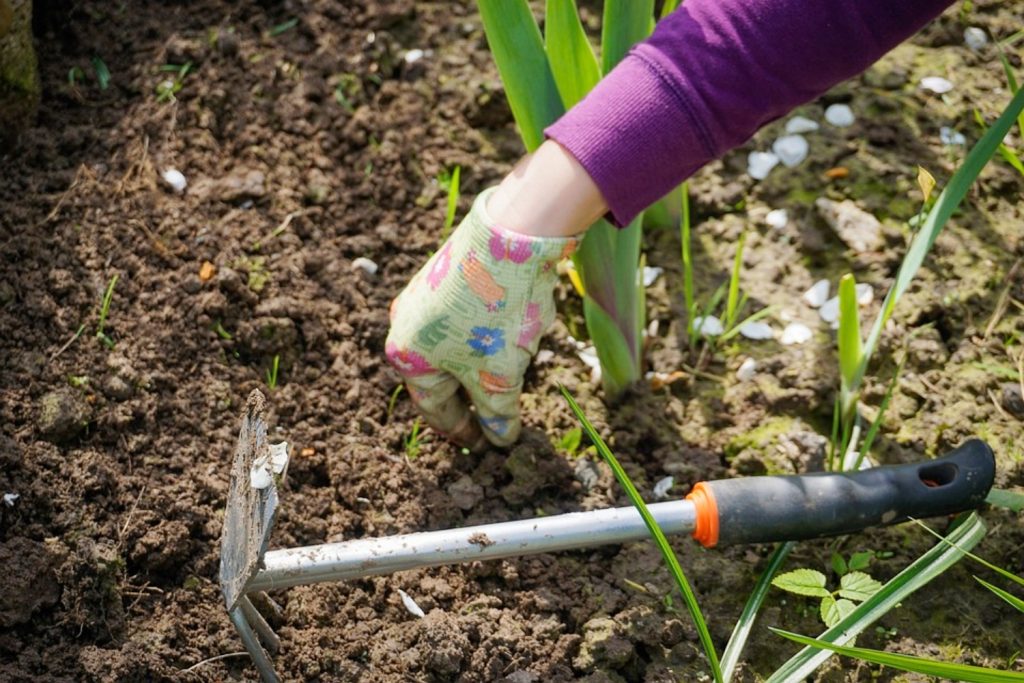
Regular mowing
As a weed-removing strategy, mowing has its limitations. However, when mowed regularly, Poa Annua and crabgrass will be unable to reach the seed development stage of their lifecycle, which can prevent the plants from spreading. Mowing every 7 to 10 days will help keep these grass weeds under control, so your lawn can take over once more. Be sure to use sharp mower blades to ensure the grasses are cut evenly, only mow when the grass is good and dry, and avoid cutting the grass shorter than 3 inches, otherwise, the turf may become stressed. The last thing you want to do is kill the good grass to get rid of the bad.
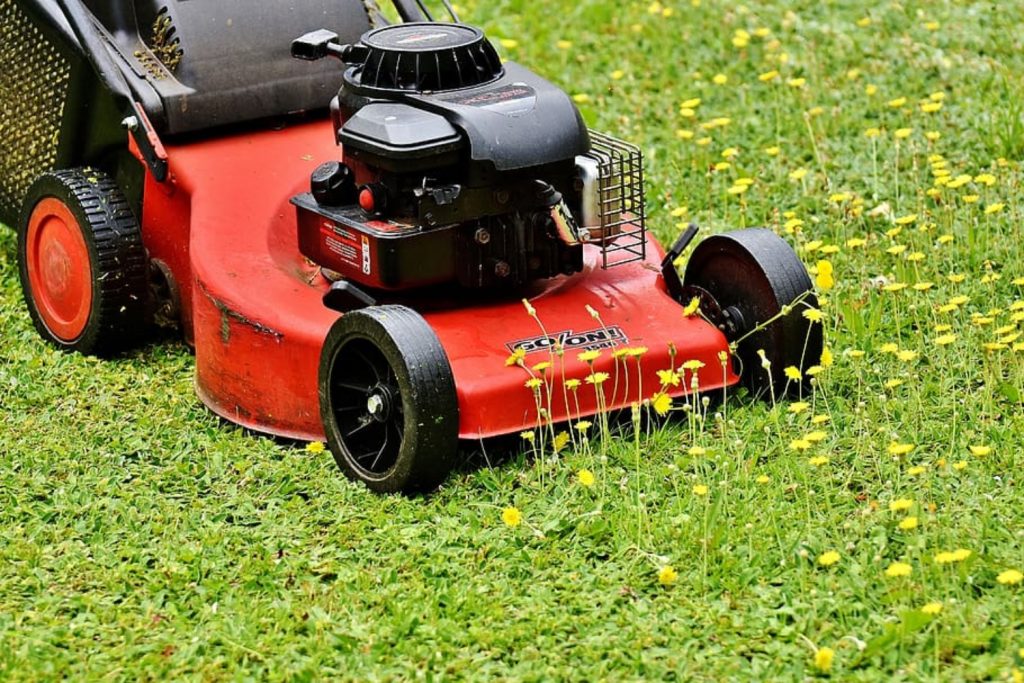
Use an herbicide
There are no known herbicides that will kill Poa Annua. But pre-emergent herbicides create a barrier in the soil that prevents seeds from germinating, limiting the infestation and shortening its duration. Look for pre-emergent pesticides with ingredients like Prodiamine, Oryzalin, and Dithiopyr, which are highly effective against many types of annual grass. Crabgrass can also be treated effectively with these types of pre-emergent herbicides, but post-emergent herbicides, like Quinclorac and Mesotrione, can be used as well.
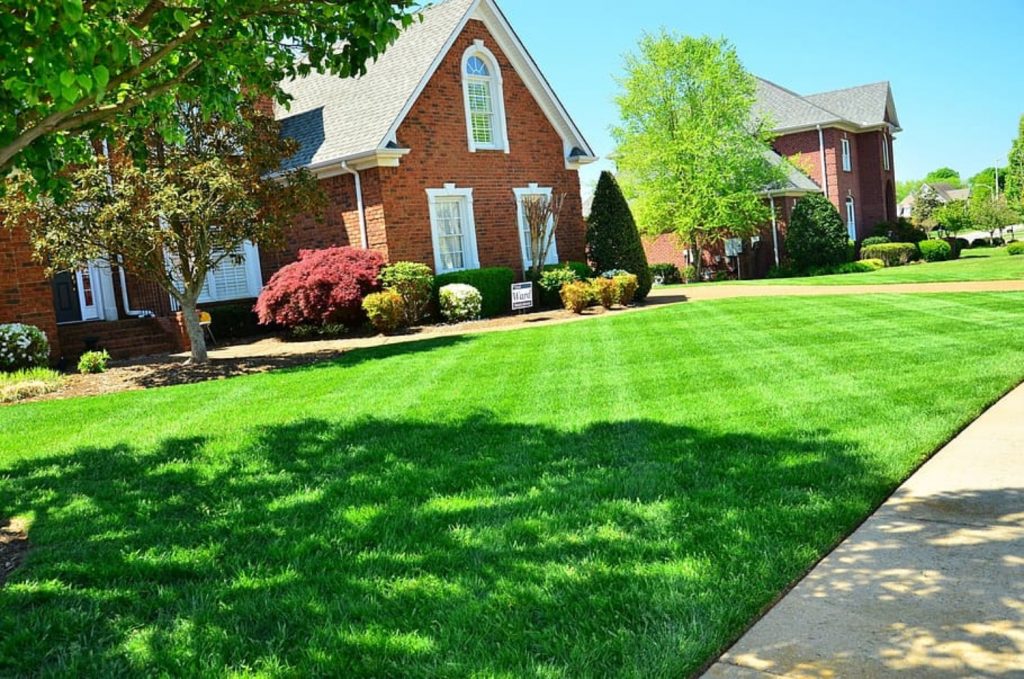
Try a weed torch
If your Poa Annua or crabgrass infestation is small, or occurring in a bare spot in your lawn where you’ve been trying to get good grass to grow, then use a weed torch to scorch the plants from the top down. Although this method can’t be used effectively in a large space, since it would kill surrounding plants, it works incredibly well in small areas.
Poa Annua vs. crabgrass: tips for dealing with both
Overcoming a Poa Annua or crabgrass infestation is equal parts fighting the weeds themselves, and improving the health of your lawn so it can fight the weeds for you.
Water your grass deeply, but infrequently, to encourage the turf to develop strong root systems. Spot treat for weeds as you see them, uprooting them by hand before they’ve gone to seed. Detach your lawn regularly to encourage thick, carpet-like growth. Lastly, fertilize your lawn regularly so it has plenty of nutrients available to grow dense.
With proper care and a few preventative measures, you can keep Poa Annua and crabgrass under control so your lawn can continue to look its best.
